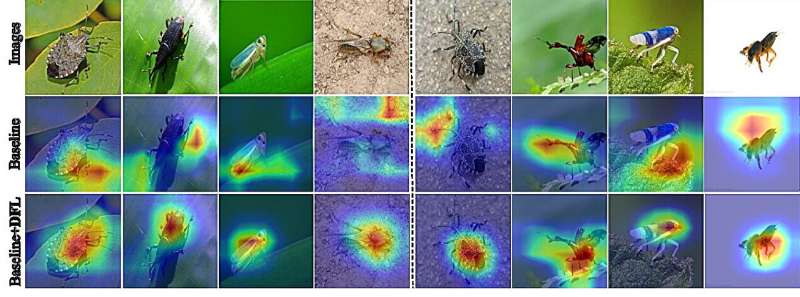This article has been reviewed according to Science X's editorial process and policies. Editors have highlighted the following attributes while ensuring the content's credibility:
fact-checked
peer-reviewed publication
trusted source
proofread
Causality-inspired method boosts crop pest recognition

A team of researchers led by Professor Xie Chengjun and Associate Professor Zhang Jie at the Hefei Institutes of Physical Science of the Chinese Academy of Sciences, have developed an innovative Decoupled Feature Learning (DFL) framework inspired by causal inference to address the challenge of distribution bias in crop pest recognition.
The research results were published in Pest Management Science.
Accurate pest recognition is crucial for smart agriculture, as it ensures crop health, yield, and quality while maintaining ecological balance. Despite advancements in deep learning for pest recognition, existing techniques struggle with distribution bias in training datasets, which often leads to over-reliance on background features rather than key pest characteristics.
To address this challenge, the team proposed an innovative framework called Decoupled Feature Learning (DFL). DFL applied causal inference techniques to mitigate training data bias by constructing diverse training domains and employed the Center Triplet Loss to enhance the model's ability to capture core pest features across different domains.
Researchers tested the new method, DFL, on three different datasets: the Li dataset, Dong's Few-Shot Pest Dataset (DFSPD), and the large-scale IP102 dataset.
These datasets were collections of images used to train and evaluate the accuracy of pest recognition models. Results showed that DFL significantly improved performance, achieving high recognition accuracies of 95.33%, 92.59%, and 74.86% on these datasets, respectively.
Visualizations of the results confirmed that DFL helped the models focus on key characteristics of pests, allowing them to maintain high accuracy even when the distribution of test data changed.
"This research represents a significant advancement in addressing data distribution bias and enhancing the reliability of deep learning in agricultural applications," said Prof. Xie Chengjun.
More information: Tao Hu et al, Causality‐inspired crop pest recognition based on Decoupled Feature Learning, Pest Management Science (2024). DOI: 10.1002/ps.8314
Journal information: Pest Management Science
Provided by Chinese Academy of Sciences




















